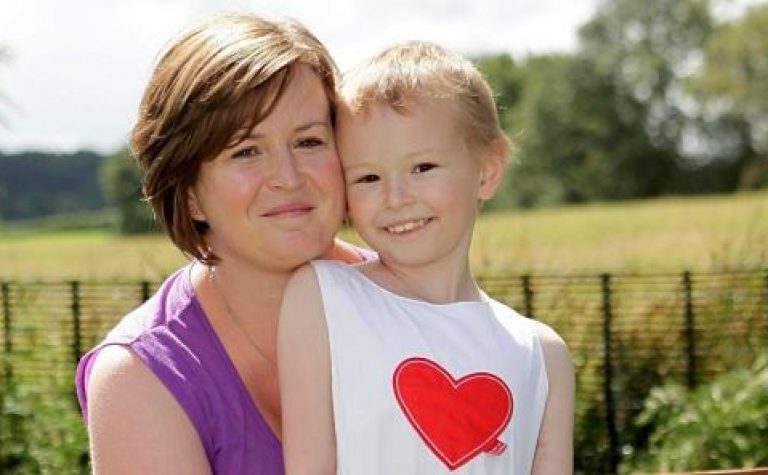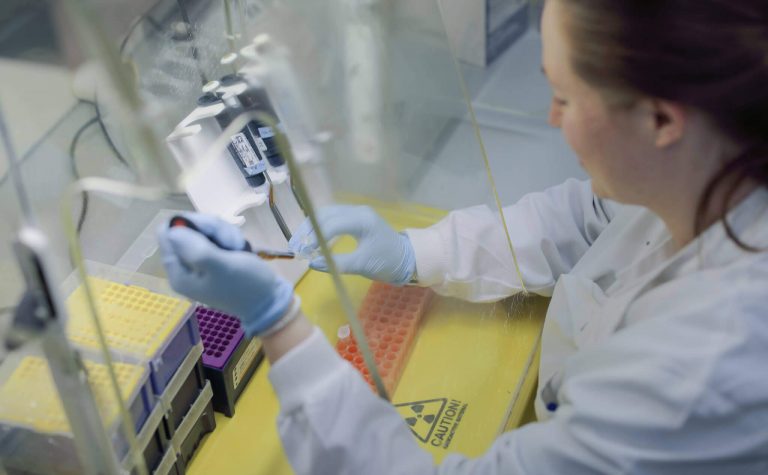What is Ewing sarcoma?
Ewing sarcoma is the second most common type of bone tumour to affect children, after osteosarcoma.
Whilst almost all cases of osteosarcoma occur in either the long bones of the legs (the femur and tibia) or the long bone of the arms (the humerus), Ewing sarcoma occurs in a broader range of sites.
Ewing sarcoma is actually a group of four different types of cancer, known collectively as the Ewing family of tumours (EFT). Ewing sarcoma of bone is the most common of these. Extraosseous Ewing sarcoma occurs in the soft tissue surrounding bone; peripheral primitive neuroectodermal tumour (PNET) can be found in either the bone or the soft tissue and Askin tumour occurs in the chest wall.
The cause of EFTs is unknown but it is thought that they may be linked to periods of rapid bone growth, explaining why they are seen more often in teenagers.
How common is Ewing sarcoma?
In Great Britain, bone sarcoma accounts for 4% of all childhood cancers. Incidence rates are very similar in both sexes and increase steadily with age; overall, bone sarcoma accounts for 9% of all cancers diagnosed in 10-14 year-olds. The most common types of bone sarcoma are osteosarcoma (accounting for 53% of cases) and Ewing tumour and related bone sarcomas (42% of cases). Around 26 children per year are diagnosed with Ewing sarcoma of the bone in Great Britain each year.
Up to 40% of childhood cases occur in the femur and tibia. Substantial numbers of cases arise in the pelvis (23%), long bones of the arms (11%), ribs, sternum and clavicle (9%) and spinal column (8%).
Ewing sarcoma has a lower incidence in children than osteosarcoma. The majority of cases are in the 10-14 year age group but the predominance of older children is less pronounced than for osteosarcoma. Up to the age of six years, Ewing sarcoma is the most common type of malignant bone tumour. Incidence is similar in boys and girls up to age 10 when a male excess begins to emerge.
This male excess emerges later in osteosarcoma (around 15-16 years). In addition to the Ewing tumours of bone, around 16 children a year are diagnosed with the soft tissue types of Ewing sarcoma.
What are the symptoms of Ewing sarcoma?
The following symptoms of Ewing Sarcoma may be noted:
- Bone pain – this may come and go initially but then become more persistent
- Tenderness
- Redness
- Swelling
- Fracture may occur after a minor injury at the site of the weakened bone.
The doctor may arrange an initial X-ray, and then refer to a cancer specialist who will usually perform a biopsy under anaesthetic (a sample of the affected bone is taken for examination under the microscope), blood tests and scans (bone scan, CT or MRI).
These tests will enable doctors to confirm the diagnosis and to determine the size of the tumour and whether it has spread. This is known as staging. Knowing the stage of the cancer helps doctors decide on the most appropriate treatment. Ewing sarcomas are divided into two groups: localised tumours are found in only one part of the body; metastatic tumours have spread to other parts of the body.
You can learn more about bone cancers, including Ewing Sarcoma with this informative video:
How is Ewing's sarcoma treated?
Treatment of Ewing Sarcoma varies according to the size, stage and position of the tumour. However it may include a combination of surgery, chemotherapy and radiotherapy.
- A number of different chemotherapy drugs are given. They are usually given before surgery to kill the cancer cells and shrink the tumour and continue after surgery to destroy any remaining cancer cells and prevent recurrence (relapse).
- The extent of surgery will depend on the site and size of the tumour. Often the tumour can be removed without causing too much damage, but if the tumour is in one of the main bones of the arm or leg, the affected limb may need to be amputated. If only part of the affected bone is removed, this is known as limb-sparing surgery. If amputation is unavoidable, a false limb will be fitted and a programme of rehabilitation will help the child to resume normal activities. Limb-sparing surgery involves either replacing the bone with an artificial prosthesis or replacing it with bone taken from another part of the body.
- Radiotherapy has shown to be very effective in the treatment of Ewing sarcoma and is often used after chemotherapy and before or after surgery. Sometimes it may be used in place of surgery if surgery is not possible.
Are there side effects?
In the short-term, treatment of Ewing Sarcoma can cause side effects such as pain, tiredness, nausea, vomiting, infections, hair loss, bruising, and tiredness.
In the longer-term, late effects of treatment, which can occur months or years later, can include abnormal bone growth, heart or lung effects, infertility and an increased risk of developing another cancer. There may be psychological problems associated with having a false limb, as well as the obvious physical limitations.
Follow-up
The child will have regular follow-ups to check for any recurrence of the cancer and for any problems that may arise as a result of the treatment they were given (late effects).
They will be checked up on every few months for the first three years after treatment and then every six months for another two years.
If the tumour comes back, further treatment may be given successfully.
Research
Many children have their treatment as part of a clinical trial.
Trials aim to improve our understanding of the best way to treat the cancer, usually by comparing the standard treatment with a new or modified version.
If appropriate, the child’s medical team will discuss participation in a relevant trial. Participation is optional but may offer the opportunity to receive new treatments.
Children with Cancer UK is funding a number of research projects focused on bone tumours.
Ewing sarcoma prognosis
The overall five year survival rate from Ewing sarcoma family tumours of bone is 66% and have not significantly improved over the last 30 years. For extraosseous tumours, the survival rate is lower at 58%. An individual’s Ewing Sarcoma prognosis depends on the size of the tumour, site, whether it has spread and response to treatment.
Bethan's Story
 Bethan’s victory against Ewing sarcoma
Bethan’s victory against Ewing sarcoma
Read Bethan’s story, told by her mum, Lynn:
“In October 2011 Bethan complained of pain but had no sign of bruising. She had a very high temperature that I couldn’t control and a strange rash all over her body. She recovered slowly but it was unusual for Bethan as she was never poorly.
Soon after, we found a lump on top of Bethan’s left arm – it appeared almost overnight. I’d never seen anything like it, we went to see the doctor.
We had a hospital appointment for an X-ray – it saved her life. When the doctors gave a clinical diagnosis of Ewing’s sarcoma, it was life-shattering. I couldn’t believe it, I just wanted to take Bethan home. She needed a month of intensive scans and tests. After the biopsy the surgeon spoke to us he was certain it was Ewing’s sarcoma.
Chemotherapy commenced. Bethan was on four drips at once – she was very poorly, it was fed through a tube and just awful. She was supposed to be home for two weeks between each cycle but it never worked out like that – she’d come home, her blood levels would drop and she’d need to go back to hospital for a blood transfusion. She was at home for three or four days at most, we pretty much lived in the hospital.
In July 2012, Bethan needed a life-saving operation. The consultant gave us a list of treatment options to choose from. We were concerned about Bethan losing her arm, but we chose the option to give her the best chance of survival. They removed Bethan’s shoulder, humerus and elbow bones, irradiated it and put it back. She was on the operating table for eight hours. She’s been left with extremely brittle bones as they are now dead, so she has no feeling in her arm. But thankfully, 100% of the Ewing sarcoma was removed.
In September 2012 Bethan started eight more rounds of chemotherapy and it was a little easier for her to bear. She wasn’t in hospital as much but she still needed blood regularly. During this time, we were able to enjoy Bethan while her bloods were good and go out a bit!
Three months later Bethan had her last round of chemo, what a day!
Bethan has now been off chemotherapy for five years and is in remission.”
If you’ve been touched by Bethan’s Ewing sarcoma story, help us invest in the high quality research which would otherwise go unfunded, helping to support children with cancer so they can be with their families for longer.


